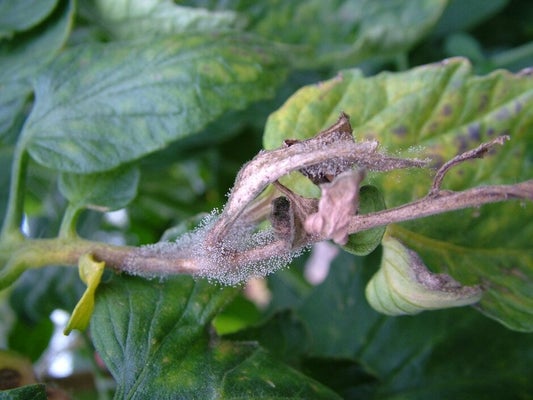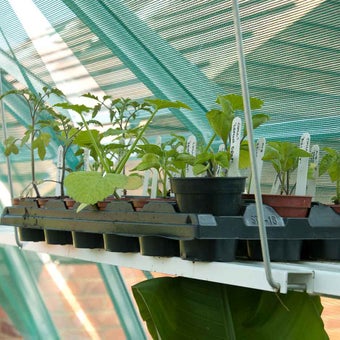
Quick facts
Common name - Grey mould
Scientific name - Botrytis cinerea
Plants affected - Many ornamentals and fruit
Main symptoms - Fuzzy grey mould
Caused by - Fungus
Timing - All year round
What is grey mould?
Grey mould is a disease caused by the fungus Botrytis cinerea. It normally enters through a wound or infects plants under stress, but will infect healthy plants as well, especially under humid conditions. It can be expected at any time of year.
It is common on grapes, strawberries, blackberries, raspberries, gooseberries, beans, cucumber, courgettes, lettuce and tomatoes. It is also a problem for plants grown under glass, where conditions can be humid and overcrowded. It will infect Chrysanthemum, Cyclamen, Pelargonium, Primula - in fact, most ornamental plants.
Symptoms
You may see the following symptoms:
- Under humid conditions fuzzy grey-brown mould grows on decaying , leaves, flowers or fruit
- If is low, infections may be contained within discrete spots, but if it is high they can spread rapidly
- Above-ground parts of many plants, particularly buds and flowers, shrivel and die
- Small black seed-like structures form on infected material (these are often overlooked)
- On bush and fruit, particularly gooseberries, Botrytis infection kills branches, but the fuzzy grey mould is seldom evident
- On strawberries, grapes and sometimes other fruits, Botrytis infection leads to a soft brown decay, often as the fruit is ripening

Control
Non-chemical control
- Hygiene is very important, especially in greenhouses and polytunnels where the disease can spread rapidly and cause extensive damage. Remove and dispose of dead and dying leaves, and flowers promptly, and don't leave dead plant material lying around
- Be very careful when picking or cutting off leaves or other plant parts affected by grey mould, as the spores are dispersed very easily. Where possible, carefully enclose the affected parts in a bag, either before or immediately after they are removed from the plant
- In outdoor settings, dispose of any plants killed or severely affected by grey mould. A more relaxed approach can be taken outdoors when it comes to leaving old, dead leaves and other plant material that isn't obviously diseased, as this can provide a valuable wildlife habitat
- Reduce by improving ventilation and do not overcrowd plants
Chemical control
No fungicides are approved for use against grey mould by gardeners.
Biology
Botrytis cinerea is an ubiquitous fungus, whose airborne spores are always present. It thrives as a saprophyte (a micro-organism living on dead organic material), but can also infect living plants under certain conditions. On green plant parts a wound or other stress is usually needed for infection, but on flowers and fruits it can infect without wounds, particularly under humid conditions.
It is also able to cause latent infections, where the plant is infected but symptoms of the disease may not be produced for a considerable time. In some fruit crops the fungus enters flowers and colonises the developing fruit, but does not break out and cause a rot until the fruit begins to ripen and the sugar content rises. This is very noticeable with strawberries. It can also cause latent infections in primulas, where research has shown the fungus is seed-borne and develops with the plant, only breaking out after considerable growth has occurred.
The fungus forms black, seed-like resting structures (sclerotia) in dead plant tissue, which can carry the fungus through periods when host plants are scarce. These can stay for some time, but will eventually germinate to produce more spores.
Botrytis cinerea has a very wide host range, but there a number of closely-related species which are much more specific to their host, including those infecting snowdrop (B. galanthina), peony (B. paeoniae), onion (B. allii) and broad bean (B. fabae).












